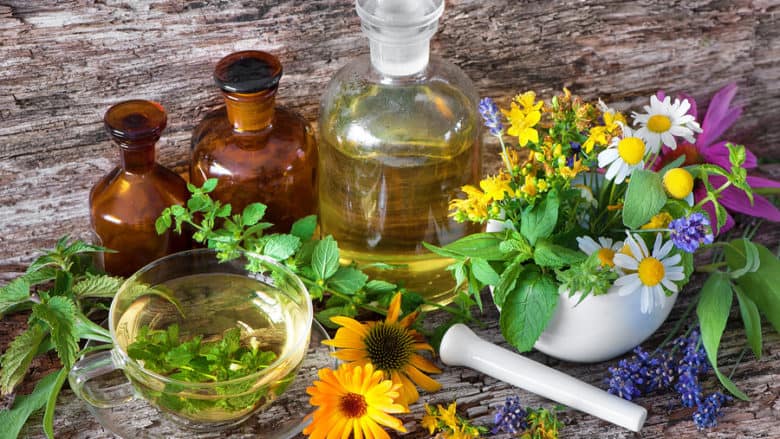
Natural healing herbs have provided nourishment, energy, and healing for optimal health through out the ages. Home grown herbs can even be a part of chemical-free living.
Yet, western (allopathic) medicine with its focus on disease treatment has barely scratched the surface of herbals potential, reports Andrew Weil, MD, clinical professor of medicine and director of the Program for Integrative Medicine at the University of Arizona.
Natural herbs are an untapped resource of disease fighting goodness, that has been overshadowed by a close-mindedness ideology. Now we are finally beginning to see different medical majors, like within a RN-BSN program for example, researching and experimenting with these herbs in order to maximize their potential.
Other, more mature, forms of medicine such as Chinese and Ayurvedic regularly use herbs for the treatment of disease and as tonics to promote health, vitality, and longevity. The central role of herbs in their medicine grew out of studious research and long-term experience.
In fact, even some of Western medicine’s most steady remedies came from herbs.
For instance, aspirin was created by making a small chemical change to a natural constituent of white-willow bark—salicylic acid. Its use in treating fever, pain, and inflammation make it the most widely used remedy in the world. The heart medication, digitalis (digoxin) originated from the foxglove plant.
Natural healing herbs come from all forms and parts of plants, like these examples:
Roots (Ginseng, Ginger, Arnica, Turmeric)
Seeds (Milk Thistle Herb)
Combined Plant Parts (Blessed Thistle – stems, leaf and flower)
Bulbs (Garlic)
Leaves (Green Tea, Aloe)
Mushrooms (Reishi)
To realize their natural healing potential consider their form, product quality, and these safety factors.
Natural Healing Herbs Forms
Herbal products, also called botanical products or phytomedicines, are prepared in various ways. Common preparations include teas, decoctions, tinctures, and extracts:
Teas (infusions), made by adding boiling water to fresh or dried botanicals and steeping them, are most common.
Decoctions result from simmering herbs in boiling water over longer periods of time then used with teas. Some roots, barks, and berries require this more forceful treatment to extract their desired ingredients.
Tinctures result from soaking the herb in a solution of alcohol and water. This process concentrates and preserves the herb in a liquid form. The botanical-to-extract ratio indicates the strength of the herb.
Extracts occur from soaking the herb in a liquid that removes specific types of chemicals. Extracts can be liquid or dried (used in capsules or tablets).
Further, a particular group of chemicals or a single chemical may be isolated from a botanical and sold as a dietary supplement, such as phytoestrogens from soy products.
How to Determine Natural Healing Herbs Product Quality
Not all herbal supplement products are created equal—look for evidence that products are standardized and meet Good Manufacturing Practices (GMPs). For an extra step to assess product quality, read the reviews at ConsumerLab.com.
Standardized: the word, “standardized” on the label indicates that the manufacturer uses a process to ensure batch-to-batch consistency. Manufacturers standardize their products voluntarily as the US government has no requirement or legal definition for standardization of botanical dietary supplements.
GMPs: GMPs on the label indicates that the product has met a set of requirements for manufacturing, preparation, and storage set by the FDA to ensure quality.
ConsumerLab.com: This independent dietary supplement organization offers reports on their analysis of the quality and safety of dietary supplements including herbs. They test products to determine if ingredients listed on the label actually match what is in the bottle. They also test for contaminates.
For instance in a 2011 review of 7 ginkgo herbal supplement products, 5 failed their testing. One failed due to lead contamination and failure of the caplet to break apart properly. The rest did not meet standards or contain the amounts of the compounds stated on their labels.
Safety Factors to Consider for Natural Healing Herbs
Herbal supplements safety depend on many things including:
- The herb’s chemical makeup and its actions
- How it is prepared and how much you take (dose)
- Interactions with medications you may be taking
The Institutes of Health Botanical Dietary Supplements Backgrounder offers these examples of natural healing herbs:
[Mild botanicals] Chamomile and peppermint…are usually taken as teas to aid digestion and are generally considered safe for self-administration. Some mild botanicals may have to be taken for weeks or months before their full effects are achieved. For example, valerian may be effective as a sleep aid after 14 days of use but it is rarely effective after just one dose. In contrast a powerful botanical produces a fast result. Kava, as one example, is reported to have an immediate and powerful action affecting anxiety and muscle relaxation…Different preparations vary in the relative amounts and concentrations of chemical removed from the whole botanical. For example, peppermint tea is generally considered safe to drink but peppermint oil is much more concentrated and can be toxic if used incorrectly.
They say that the safest possible use of an herbal product includes consulting with your doctor first and not taking a bigger dose than the label recommends.
Bottom Line
Natural healing herbs form a vital root for health. When purchasing herbal supplements look for evidences of standardization and GMPs.
Use them safely by following recommended dosages and consulting with your health practitioner before taking more powerful herbs, especially if on medications, pregnant or nursing.
Natural Healing Herbs Sources and Resources
ConsumerLab.com at http://www.consumerlab.com.
Office of Dietary Supplements, National Institutes of Health, “Botanical Dietary Supplements: Background Information,” at http://ods.od.nih.gov/factsheets/BotanicalBackground.
Reid, Daniel, The Complete Book of Chinese Health & Healing (Boston: Shambhala, 1995).
Weil, Andrew, 8 Weeks to Optimal Health (New York: Ballantine Books, 2007).
